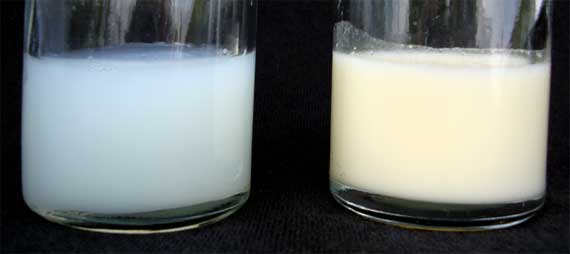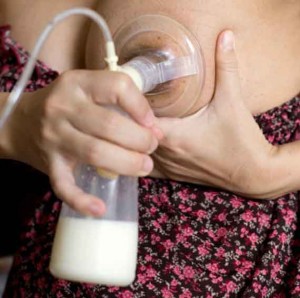You may want to express milk from your breasts to relieve engorgement, to help increase milk production, or to provide milk for your baby while you are away. You can express milk manually or with a breast pump.
Here’s how you do it:
To Express Milk By Hand
• Wash your hands
• Massage your breast to cause the let-down reflex
• Place your thumb on top of the areola and the first two fingers on the bottom
• Gently press toward your chest and squeeze toward the nipple
• To prevent soreness and to empty all of your breast, rotate your thumb and fingers around the areola
To Express Milk By Pump
• Wash your hands and the breast pump
• Follow the instructions that came with the pump
• When you finish, wash the pump, and store it for future use
Here is a pump we reviewed
Storing Breast Milk
When collecting milk, be sure to store it in clean containers that have a screw or snap cap. Don’t store milk in plastic bags or formula bottle bags as they can leak, break or spill. Do not add fresh milk to a bottle that has been opened or frozen. Do not refreeze milk once it has been thawed or keep milk and reuse for a later feeding.
If you are expressing milk to save for feeding, put the milk in a sterile bottle, label the bottle with the date and time and store in the refrigerator right away. Breast milk used for a full-term healthy babies can be kept or stored:
• at room temperature for 6-8 hours (keep in an area that is as cool as possible and cover the container with a towel to help keep cool)
• in an insulated cooler bag for 24 hours (keep ice packs in contact with the milk at all times and open the cooler bag as little as possible)
• in the back of the refrigerator (not the door) in a sealed container for 5 days
• in the freezer compartment of a single door refrigerator for 2 weeks
• in the freezer compartment of a double door refrigerator for 3-6 months
• in a chest or upright deep freezer for 6-12 months.
When you store milk in the freezer, store it in the back of the freezer where the temperature is more constant.
A baby should only receive milk from it’s own mother. If you leave your baby in someone else’s care, make sure the milk bottles are labeled and the label will not wash or rinse off or come up while being handled. When you pick up your baby, if your caretaker gives you unused and unopened milk ask how it has been stored since you left. Do not feed your baby with a bottle that has been used for an earlier feeding.
(Source: American Academy of Pediatrics, 2010)


More Breastfeeding for Beginners
• Overview of Breastfeeding
• When to Feed Your Baby
• How to Feed Your Baby
• Breast Care While Breastfeeding
• Breast and Nipple Problems
• Expressing and Storing Breast Milk
• Keeping up the Milk Supply
• Nutrition While Breastfeeding
• Breastfeeding in Special Situations
• Returning to Work While Breastfeeding
• Resources for Support While Breastfeeding